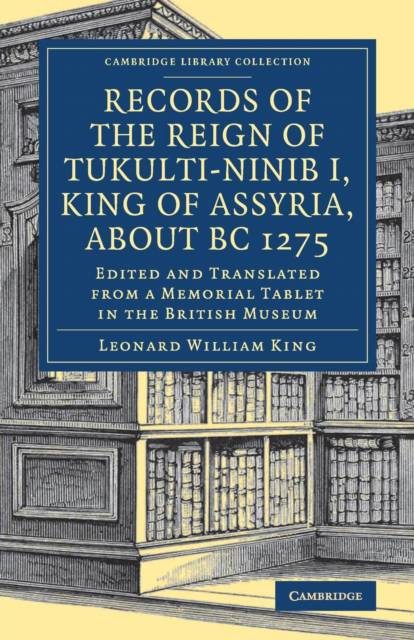
- Afhalen na 1 uur in een winkel met voorraad
- Gratis thuislevering in België vanaf € 30
- Ruim aanbod met 7 miljoen producten
- Afhalen na 1 uur in een winkel met voorraad
- Gratis thuislevering in België vanaf € 30
- Ruim aanbod met 7 miljoen producten
Zoeken
Records of the Reign of Tukulti-Ninib I, King of Assyria, about B.C. 1275
Edited and Translated from a Memorial Tablet in the British Museum
€ 53,45
+ 106 punten
Omschrijving
In the preface to this 1904 work by Leonard King (1869-1919) of the British Museum's department of Egyptian and Assyrian antiquities, he states that the text it presents 'is of great historical value, inasmuch as it supplements our knowledge of the history of Assyria and her relations with Babylonia during the early part of the thirteenth century BC'. The tablet containing the text was buried under the wall of a city founded by King Tukulti-Ninib I (transliterated as Tukulti-Ninurta by modern scholars), to commemorate its building and his previous military achievements, which included the invasion of Babylonia. This account confirms earlier documents, and gives more detail on the chronology of a crucial period in the ancient history of the Near East. The book offers a lengthy introduction on the tablet and on the tradition of such foundation documents, as well as the cuneiform text and a parallel translation, along with an appendix of related documents.
Specificaties
Betrokkenen
- Uitgeverij:
Inhoud
- Aantal bladzijden:
- 208
- Taal:
- Engels
- Reeks:
Eigenschappen
- Productcode (EAN):
- 9781108082419
- Verschijningsdatum:
- 27/06/2019
- Uitvoering:
- Paperback
- Formaat:
- Trade paperback (VS)
- Afmetingen:
- 140 mm x 216 mm
- Gewicht:
- 267 g

Alleen bij Standaard Boekhandel
+ 106 punten op je klantenkaart van Standaard Boekhandel
Beoordelingen
We publiceren alleen reviews die voldoen aan de voorwaarden voor reviews. Bekijk onze voorwaarden voor reviews.










